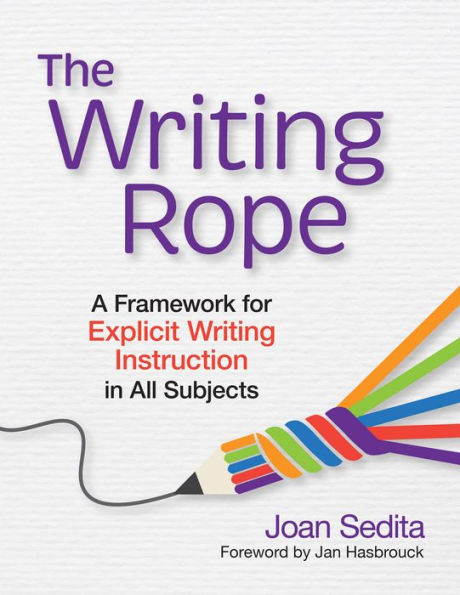Table of Contents
About the Downloads vii
About the Author ix
Foreword Jan Hasbrouck, Ph.D. xi
Acknowledgments xiii
Introduction xv
I Laying the Foundation for Teachers and Students
Chapter 1 Introduction to The Writing Rope 3
The Writing Rope 3
Teaching Writing in All Subject Areas 6
Three Types of Content Writing Tasks 8
Summary 9
Chapter 2 What Do We Know About Effective Writing Instruction? 11
Findings From Writing Research 11
Writing Is Complex 13
Seven Teaching Principles 15
Summary 21
Chapter 3 Transcription Skills 23
Spelling 24
Handwriting 25
Early Handwriting Instruction 31
Summary 32
Chapter 4 Writing Craft 33
Task, Audience, and Purpose 34
Elements of Writing Craft 35
More About Using Mentor Text for Writer's Craft 38
Summary 41
II Skills and Strategies: Learning to Write
Chapter 5 Critical Thinking: Stages of the Writing Process 45
Using The Process Writing Routine 46
Delivering Explicit Strategy Instruction for Each Stage 47
Providing Opportunities for Feedback and Revision 57
Summary 58
Chapter 6 Syntax and Sentence Skills 59
Building Syntactic Awareness 60
Teaching Sentence Basics 61
Syntactic Awareness and Sentence Elaboration Activities 62
Weaving Sentence Skills Into the Writing Process 74
Summary 74
Chapter 7 Text Structure: Paragraph Skills 77
Teaching Paragraph Structure 78
Teaching Patterns of Organization 79
Weaving Paragraph Skills Into the Writing Process 82
Summary 82
Chapter 7 Appendix: Paragraph Templates 83
Chapter 8 Text Structure: Three Types of Writing 89
Suggested Distribution of Writing Types 90
Helping Students Craft Introductions 91
Helping Students Craft Conclusions 92
Teaching Body Organization: Topic Webs to Plan Writing 94
Using Mentor Models 95
Providing Writing Templates for the Three Types of Writing 98
Providing Feedback to Students 98
Summary 100
Chapter 8 Appendix: Writing Templates and Checklists 101
III Application: Writing to Learn
Chapter 9 Critical Thinking: Summary Writing 113
What Is a Summary? 114
Summarizing Text 114
Seven Ways to Scaffold Instruction 116
Summary 123
Chapter 10 Critical Thinking: Writing From Text Sources 125
Research Support for Writing About Texts 126
Related State and National Literacy Standards 127
Responding to Narrative Text 128
Expository Writing From Sources: Comprehension and Writing Combined 129
Writing From Sources: Teacher-Generated Prompts 130
Explicit Instruction of Skills and Strategies 132
Writing from Sources: The Importance of Teacher Planning 147
Summary 149
Chapter 10 Appendix: Writing Assignment Guide (WAG) Classroom Examples 150
Chapter 11 Putting It All Together 161
The Big Ideas in This Book 161
Reflection Activities for Evaluating Writing Instruction 162
A Consistent Approach Across Grades and Subjects 174
Appendix Writing Resources for Teachers and Students 179
References 219
Index 223



